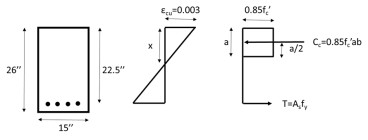Roofs
Roofs refer to the uppermost covering or envelope of a building or structure that provide protection from environmental elements, e.g. rain, snow and wind. Moreover, roofs may incorporate features like skylights, roof gardens, solar panels, and ventilation systems to enhance functionality and energy efficiency. Roofs play a vital role in the designing process and the functionality of a building, as they not only serve as a protective barrier but also contribute to structural stability. Roof systems come in various forms, materials, and configurations, tailored to the specific needs of the structure and the local conditions. The choice of such a system depends on a range of factors, including the architectural design and the structural requirements. Suitable materials include asphalt shingles, clay or concrete tiles, wooden shakes or shingles, and various types of membrane roofing.
Want to read more like this?
Structural systems
Sep, 14, 2023 | EducationStructural systems refer to the arrangement of structural elements within a building or structure...
Columns
Sep, 14, 2023 | EducationColumn, in structural engineering, is a vertical structural element that primarily supports compres...
Structure types
Sep, 07, 2023 | EducationThe term structure type refers to the classification or categorization of different architectural...

Two buildings collapsed in Alaska during the weekend
Mar, 04, 2023 | NewsThe roofs of two commercial buildings collapsed during the weekend in the town of Anchorage, Alaska...
Plates
Sep, 14, 2023 | EducationPlates are flat, two-dimensional elements that serve a wide array of functions, from providing stab...
Decks
Sep, 14, 2023 | EducationDecks refer to horizontal platforms or structural elements that serve various purposes within a str...
Walls
Sep, 14, 2023 | EducationWalls can serve as integral components of a structural system in structural engineering. They provi...
Structural stability
Sep, 16, 2022 | EducationStructural stability is the ability of a structure to maintain its shape and resist deformation or...
Connections and joints
Sep, 14, 2023 | EducationConnections and joints refer to the critical elements in structural systems that serve as the link...
Trending

Diaphragms

Nominal flexural strength of a reinforced concrete beam

Calculate the Maximum Shear Stress

Truss deflection using the unit load method

Overhanging beam: shear force and bending moment calculation

Calculation Example – Beam with inner hinge (Part A). Find the Reactions

Method of sections

